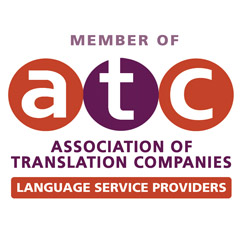Introduction to Translation Technology
Translation technology is very important in today’s world where everything is connected globally. It helps people talk to each other even if they speak different languages. This technology includes many improvements to make translating easier, faster, and available to more people.
Historical Overview
The story of translation technology goes way back to ancient times when people used simple ways like writing things down by hand or explaining them to each other. As time went on, inventions like the printing press and typewriters made a big difference in how translation worked. But it wasn’t until we got into the digital age that translation technology really took off and got much better.
Machine Translation
One big step forward in translation technology is called machine translation (MT). It’s a way for computers to translate text from one language to another without people having to do it manually. This makes translating much faster, but sometimes it struggles to get all the small details and the meaning just right.
Neural Machine Translation
Recently, a new kind of translation called neural machine translation (NMT) has become really important in the field. Unlike the old way of machine translation, which followed strict rules, NMT uses artificial neural networks to make translations sound more natural. This has made translations much better, especially for tricky languages or specific subjects.
Natural Language Processing (NLP)
Natural language processing (NLP) is super important for making translation technology better. It helps computers understand and make sense of human language, so they can translate text more accurately. This technology is behind lots of things we use every day, like chatbots, systems that understand different languages, and tools that figure out how people feel from what they write.
Machine Learning in Translation
Machine learning has made a big difference in translation. It keeps getting better at making translations more accurate and faster. By looking at lots of language data, these algorithms can find patterns and make translations better. There are different kinds of machine learning methods, like ones that focus on phrases and others that use deep learning. This has changed how we do translation a lot.
Big Data and Translation
Big data has brought in a whole new way of doing translation. By using huge amounts of data from many languages, translators can use math and computer programs to make translations better and faster. This also helps them see trends and patterns in languages, so translations can be more exact.
Cloud-Based Translation Services
Cloud-based translation services are really useful for businesses that work all around the world. Instead of keeping translation stuff on their own computers, they can store it on the internet. This means they can get to it from anywhere, which makes working together easier. Also, these services often have extra features to make sure translations are good quality and correct.
Localization Technology
Localization technology is all about making sure that things like websites, apps, and other content are right for different languages and cultures. It’s not just about translating words, but also changing pictures, designs, and how things work to fit what people like in different places. This is really important for businesses that want to sell their stuff all over the world, like on websites or phone apps.
Mobile Translation Apps
Because lots of people use smartphones, translation apps for phones are getting more and more popular. They’re handy for travelers, people learning languages, and businesses too. These apps let you translate stuff quickly, like text, talking, and even pictures, while you’re out and about. But they might not always get everything perfect like a human translator would.
Augmented Reality (AR) Translation
Augmented reality (AR) is getting ready to change how we see and use the world around us, including how we translate languages. AR apps for translation can show digital translations right on real things, like signs and menus in other languages. This helps people quickly understand what things mean without having to guess. It’s like a fun way to learn and talk with people from different cultures.
Voice Recognition and Translation
Voice recognition technology has made translation services much easier to use. Now, people can just talk into their devices and get translations right away. When voice technology works together with translation programs, it makes talking in different languages feel more natural. This is really helpful for industries like tourism, hotels, and global business, where people need to communicate with others who speak different languages.
Blockchain in Translation
Blockchain is a special kind of technology that keeps translation projects safe and honest. It works by storing translation records in a way that’s very secure and can’t be changed without anyone noticing. This is really useful for industries where getting things right and being trustworthy is super important, like law and medicine.
The Role of Human Translators
Even though translation technology keeps getting better, human translators are still really important for doing tricky language jobs well. Machines are good at handling lots of text fast, but they can have trouble with small details, sayings, and understanding different cultures. Human translators are great at understanding all these things and can make sure translations are just right. They add a special touch that machines can’t.
Future Outlook
Thinking about the future, there are so many exciting things in store for translation technology. As artificial intelligence, machine learning, and natural language processing keep improving, we’ll be able to do even more amazing things. Imagine being able to translate speech instantly or seamlessly use different devices together for translation. The future of translation tech is going to change how we talk in a world with many languages.
Conclusion
Translation technology has changed how we talk to each other, making it easier to understand different languages and cultures. From old machines to new fancy ones using artificial intelligence, translation has gotten much better. It’s more accurate, faster, and easier to use now. And there’s still a lot more to come in the future. Innovation in translation is moving fast, and we can expect even more cool stuff in the years ahead.
FAQs
1. Is machine translation as accurate as human translation?
– Even though machine translation has improved a lot lately, it’s still not as accurate as human translation, especially for tricky or detailed texts.
2. What are some challenges facing the adoption of translation technology?
– Some of the difficulties include keeping the little details of language and culture correct, making sure people’s data stays private and safe, and dealing with problems when translating specific topics or languages.
3. How can businesses benefit from localization technology?
– Localization technology helps businesses customize their products and services to fit the different cultures and languages of their customers. This makes people more interested and involved with what the business offers, and helps the business reach more people in the market.
4. What role do human translators play in a world increasingly dominated by technology?
– Human translators bring a depth of understanding, cultural sensitivity, and linguistic nuance that machines cannot replicate, making them indispensable for tasks requiring creativity, context, and cultural fluency.
5. What trends can we expect to see in translation technology in the near future?
– We can expect continued advancements in machine learning, natural language processing, and artificial intelligence, leading to more accurate, efficient, and context-aware translation systems.
Find more on www.traductoresabc.com




